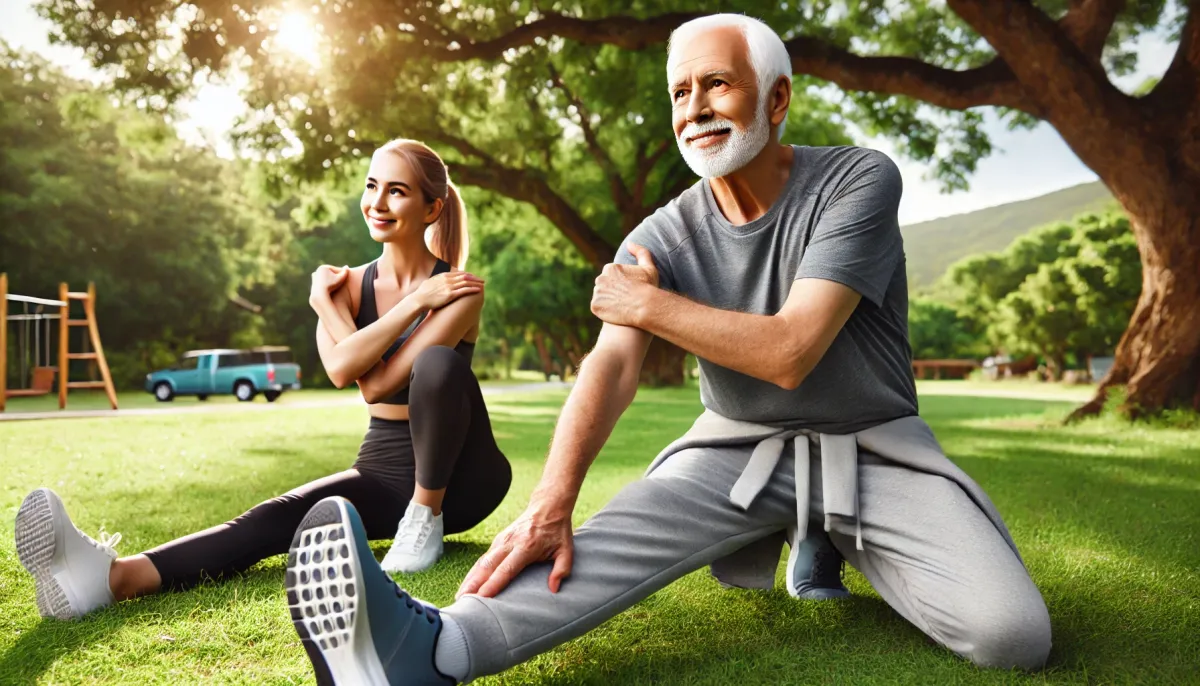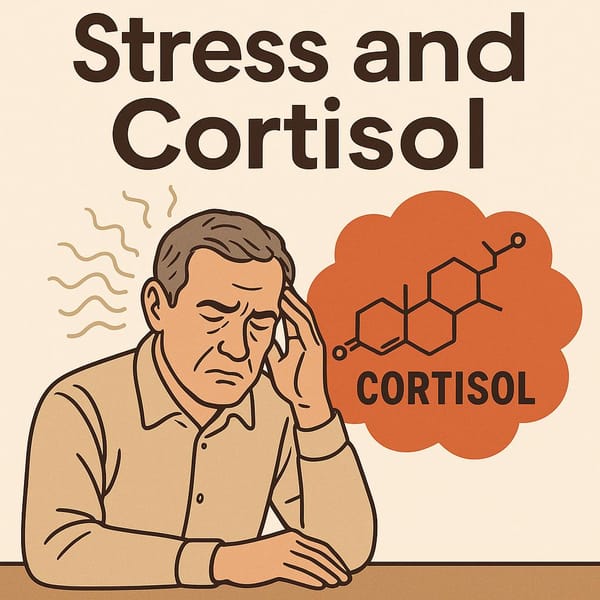Stretching Exercises for 50+: Achieve Fitness with Flexibility
Stretching exercises for individuals aged 50+ help enhance flexibility, reduce joint pain, and improve physical performance safely with scientifically proven techniques and principles.

Introduction
Reaching the age of 50+ does not mean you have to stop engaging in activities that require mobility and flexibility. Many people worry about knee issues, joint pain, muscle stiffness, or increased fatigue, but these concerns can be alleviated with the right type of exercise. One of the most recommended forms of physical activity by experts is stretching exercises, which significantly improve flexibility, reduce the risk of injuries, and ease joint or muscle discomfort in older adults.
In this article, we will delve into the benefits, techniques, and correct ways to stretch for individuals aged 50+, along with safety precautions and ways to incorporate stretching into daily routines. This will ensure your body remains agile, safe, and overall healthier for years to come.
Why Should People 50+ Prioritize Stretching?
1. Reducing the Risk of Injuries
As we age, joints and muscles tend to lose flexibility, making injuries more likely. Neglecting to stretch properly before or after activities can lead to severe injuries such as muscle strains, joint inflammation, or tendon issues. Regular stretching prepares the body, significantly reducing injury risks.
2. Enhancing Mobility in Daily Life
Everyday movements like standing up, walking, or reaching for objects become easier when the body is flexible. Stretching ensures smoother joint mobility, allowing older adults to maintain independence and an active lifestyle.
3. Alleviating Muscle and Joint Pain
Many older adults experience pain in the shoulders, back, and knees. Stretching helps relax muscles, reduces pressure points, and improves blood circulation, which can alleviate pain and discomfort. (Reference: American College of Sports Medicine)
4. Balancing the Body and Mind
Stretching is not just about muscles—it is also a mindfulness exercise. Focusing on slow and controlled movements promotes relaxation, reduces anxiety, and enhances overall well-being.
Safe Stretching Principles for 50+
- Always Warm Up First: Even for light stretching, start with 5-10 minutes of light movement such as walking or gentle arm swings to prepare joints and muscles.
- Move Smoothly: Avoid sudden jerking motions. Gradually increase the stretch until you feel a gentle tension—never pain.
- Hold Each Stretch for 10-30 Seconds: This duration allows muscles to adjust and relax properly. (Reference: Harvard Health Publishing)
- Breathe Consistently: Maintain slow, steady breaths to facilitate relaxation during each stretch.
- Listen to Your Body: If you experience pain or discomfort, stop immediately and consult a healthcare professional before resuming.
Basic Stretching Exercises for 50+
1. Neck and Shoulder Stretch
- Start Position: Sit or stand with a straight posture, relax shoulders.
- Execution: Slowly tilt your head to the right until you feel a mild stretch on the left side of your neck. Hold for 10-15 seconds, then switch sides. Rotate shoulders forward and backward slowly.
- Precaution: Avoid rapid neck movements to prevent dizziness.
2. Lower Back Stretch
- Start Position: Sit on a chair or stand upright with hands on your waist.
- Execution: Gently lean backward slightly to feel a stretch in the lower back. Hold for 10-15 seconds. Then lean to the left and right alternately.
- Precaution: Stop if you feel sharp pain and avoid excessive leaning.
3. Hip and Hamstring Stretch
- Start Position: Stand straight, holding onto a chair for balance.
- Execution: Step your right foot slightly forward, keep your left knee slightly bent, and slowly reach toward your right toes. Hold for 10-15 seconds, then switch sides.
- Precaution: Avoid bouncing or overstretching to prevent tendon injuries.
4. Calf Stretch
- Start Position: Stand near a wall or a chair for support.
- Execution: Step your right foot back slightly, keep your right leg straight, bend your left knee slightly forward, and press your right heel toward the ground. Hold for 10-15 seconds, then switch sides.
- Precaution: Avoid excessive pressure on the foot to prevent strain.
5. Chest and Arm Stretch
- Start Position: Stand upright with feet slightly apart, clasp hands behind your back.
- Execution: Slowly extend arms backward and lift your chest. Hold for 10-20 seconds.
- Precaution: If shoulder mobility is limited, hold onto a wall or chair instead of clasping hands.
Note: If you are new to stretching, start with simpler exercises and adjust duration based on your comfort level.
Additional Stretching Techniques
- Dynamic Stretching: Involves slow, controlled movements through the full range of motion, helping activate muscles before activities (e.g., gentle arm swings, slow leg lifts).
- Static Stretching: Holding a stretch in a comfortable position for 10-30 seconds, ideal for cooling down after exercise or for morning/evening relaxation.
- Using Props: Resistance bands, Swiss balls, or towels can help enhance controlled stretching.
- Seeking Expert Guidance: If you have pre-existing conditions like osteoarthritis or chronic back pain, consult a physician or physical therapist for suitable stretches.
Integrating Stretching into Your Routine
- Morning Routine: Light stretches while still in bed or after waking up can improve circulation.
- Afternoon Breaks: If you feel stiffness, take 5-10 minutes for stretching breaks.
- Before Bed: Gentle stretching and deep breathing can promote better sleep quality.
- Mobile Apps: Many apps offer guided stretching routines suitable for seniors.
Weekly Stretching Plan
| Day | Focus Areas | Duration | Notes |
|---|---|---|---|
| Monday | Neck, Shoulders, Arms | 15 min | Stretch before/after walking |
| Tuesday | Lower Back, Hips | 15 min | Incorporate after chores |
| Wednesday | Rest or Meditation | – | Focus on deep breathing |
| Thursday | Legs, Calves, Hamstrings | 20 min | Perform at least 3-4 stretches |
| Friday | Full Body | 20 min | Cover all muscle groups |
| Saturday | Light Activity (e.g., Cycling) | – | Use dynamic stretching before activity |
| Sunday | Chest, Back, Shoulders | 15 min | Adjust based on comfort |
Key Precautions and Self-Assessment
- Consult Your Doctor: If you have chronic conditions such as heart disease, severe osteoarthritis, or osteoporosis, seek medical advice before starting a new stretching routine.
- Assess Your Physical Capabilities: Begin with low-intensity stretches and gradually increase the duration and intensity as you grow stronger.
- Stop if You Experience Pain: Avoid pushing through pain, which could lead to long-term injuries.
- Monitor Your Progress: Proper stretching should leave you feeling more relaxed and less stiff. If your discomfort grows, adjust your routine or seek professional help.
Combining Stretching with Other Exercises
- Yoga: Incorporates meditative practices and low-impact movements, ideal for improving balance and strengthening core muscles.
- Pilates: Emphasizes core strength and flexibility, often including various stretching techniques.
- Tai Chi: Slow, graceful movements that promote mental focus, balance, and gentle stretching.
- Walking or Swimming: Complement these activities with stretches before and after to help prevent stiffness and injury.
Supporting Joint Health Through Proper Nutrition
- High-Quality Protein: Found in fish, eggs, legumes, and whole grains to help repair and maintain muscle mass.
- Vitamin D and Calcium: Strengthen bones and can be found in dairy products, small fish, or supplements (combined with mild sunlight exposure).
- Omega-3 Fatty Acids: Present in salmon, mackerel, and sardines, beneficial for reducing inflammation in joints.
- Reduce Excessive Sugar and Salt: High intake of sugar or salt can contribute to inflammation and poor circulation.
For more insights on diet for seniors, check out the related article “Nutrition for Healthy Bones and Joints at 50+” on our FiftyGoFit blog.
References
- American College of Sports Medicine (ACSM). www.acsm.org
- Harvard Health Publishing. www.health.harvard.edu
- World Health Organization (WHO). www.who.int
- Thai Ministry of Public Health, Department of Health. anamaai.moph.go.th
Conclusion
For older adults stepping into their 50s and beyond, maintaining a regular stretching routine plays a crucial role in staying mobile, preventing injuries, and alleviating everyday aches and pains. Incorporating recommended techniques—such as proper warm-ups, steady breathing, and avoiding abrupt or aggressive movements—ensures you reap the maximum benefits safely.
Combining stretching with other moderate exercises like walking, yoga, or swimming while adopting a balanced diet can further strengthen muscles and joints. Always consult with a healthcare professional before beginning any new regimen, ensuring the exercises suit your current health condition.
Written by the FiftyGoFit Team — dedicated to promoting healthy living and lifelong well-being.



